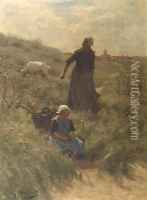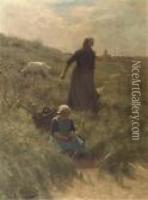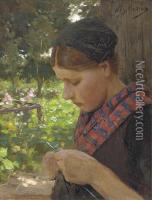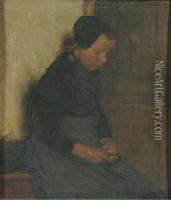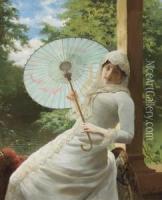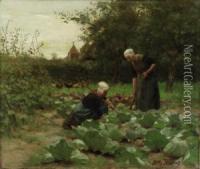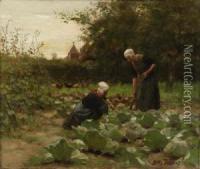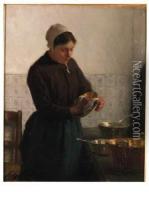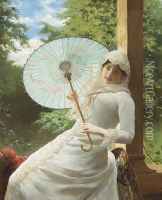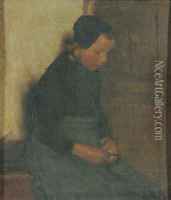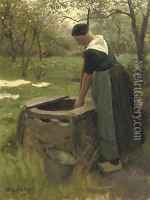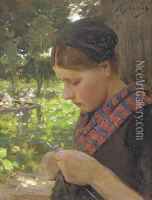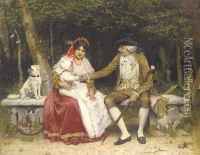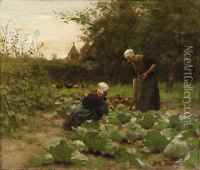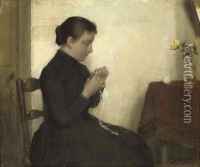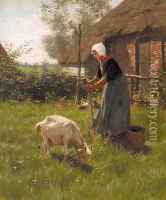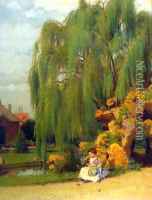Willy Martens Paintings
Willy Martens was a Dutch painter known primarily for his works as a genre painter, as well as for his portraits and still-life paintings. Born in The Hague, Netherlands, in 1856, Martens developed an interest in art at a young age. He received his artistic training at the Royal Academy of Art in The Hague, where he was influenced by the Hague School of painters, a group known for their realistic depictions of everyday life in the Netherlands during the 19th century.
Martens began to establish a name for himself with his genre paintings, which often depicted scenes from daily life with a great deal of warmth and attention to detail. His works often featured interiors with figures, showcasing the social interactions and domestic life of his time. He became well-regarded for his ability to capture textures and the effects of light, creating a sense of intimacy in his paintings.
Throughout his career, Martens exhibited his work in various venues, including the annual exhibitions of the Royal Academy of Art. His paintings were well-received, and he gained a respectable following. Martens' portraits were also highly praised for their lifelike quality and the subtle rendering of his subjects' personalities.
In addition to genre scenes and portraits, Martens was adept at still-life painting. His still-life works often included flowers, showcasing his skill in rendering delicate petals and the play of light on different surfaces. These paintings, like his genre scenes, are marked by a meticulous attention to detail and a harmonious composition.
Willy Martens continued to paint throughout his life, contributing to the Dutch art scene until his death in 1927. His legacy is that of a skilled painter who captured the essence of Dutch life in the late 19th and early 20th centuries with sincerity and a fine artistic touch. His works can be found in various collections and museums, where they continue to be appreciated for their contribution to the genre of Dutch realist painting.
